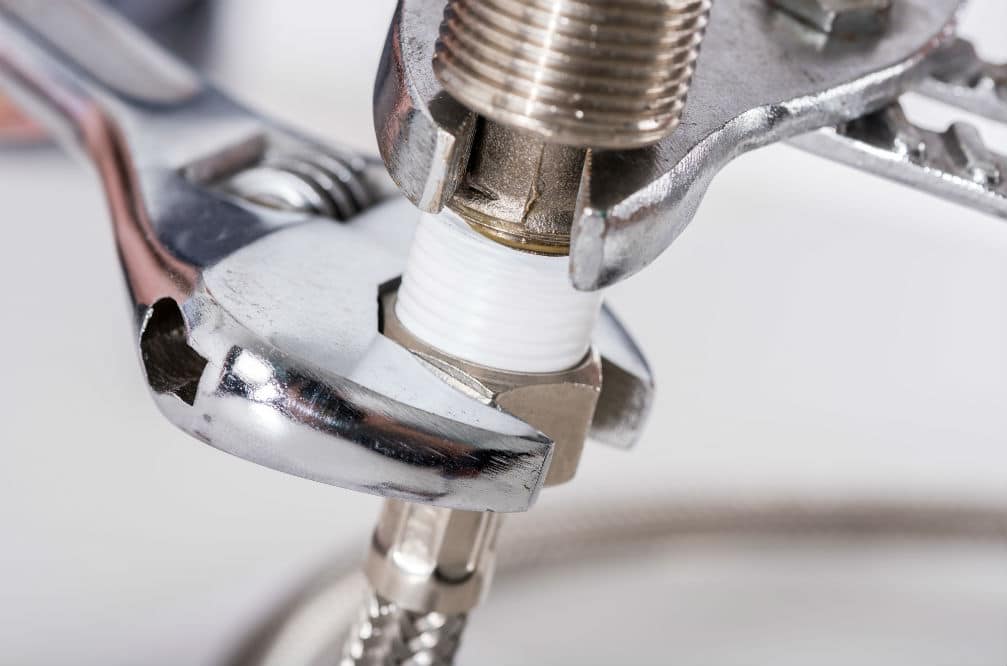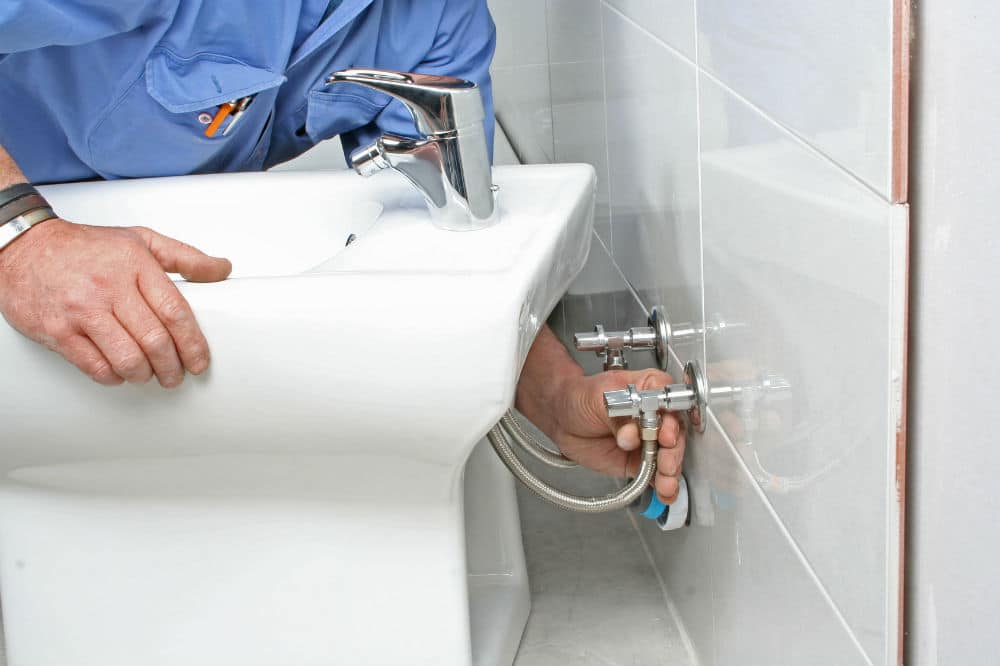There is nothing more annoying in terms of household repairs than leaking pipes. They give you that lingering sound of water which screams total wastage.
They get worse whenever you keep using things attached to it; not to mention the puddle of water on the floor. Then, there are leaking bidets.
For sure, these are the type of leaks that will eventually soak your entire body. Hence, you must know how to fix leaking bidets.
Definitely, there are a number of factors that should be considered when fixing bidets. Of course, accompanying those factors are certain tools and parts needed to fix the problem.
This can really be a tough role to take on but if you are one of the courageous ones, well, by all means, gear up as we are going to discuss the different ways on how to fix leaking bidets. We are also going to address the various causes of such leaks.
Why Do Bidets Leak: The Common Causes
Here are the common causes of bidet leaks:
- Loose valve
- Dirty filter
- Water overflow in the tank
- Defective nozzle
- Broken hose
If you check your bidet right now and come to the conclusion that the reason for such leaks is due to the causes listed above, then congratulations! You can fix the leak on your own. However, if you still cannot surely pinpoint the cause, then you really have to call a plumber.
Nonetheless, if you opt to proceed, here are the tools and parts that you might need:
- Wrench
- Screwdriver
- Metal Clamps
- Teflon tape
- T-valve
- Water supply hose
How to Fix Leaking Bidets: The Situations and Steps
Now that you have the tools ready, you might have found a bit of courage and confidence. Let us then move on to the hard part. Below are specific situations with the corresponding steps that you can do.
Loose Valve
We are talking about two valves here. The first valve is the main valve that connects to the wall or your faucet. The other valve is the t-valve that is connected to your toilet, and this is the valve that houses the hose of the bidet.
- Step one: Turn off the water supply valve.
- Step two: Check the t-valve if it is loose. Even if it is not loose, secure it with the use of a wrench.
- Step three: Open the water valve and try to use the bidet. If there are still leaks, you have to turn off the water valve again.
- Step four: Check the main valve if it is loose, and secure it with the use of a wrench.
- Step five: Open the water valve again and check for leaks.
Dirty Filter
Bidets that come with filters are the toilet seat bidets and underside bidets. The filters are usually located near the controls. If it is too dirty or there is something that blocks the flow of water, it will cause a leak.
- Step one: Turn off the water supply valve.
- Step two: Open the filter cage of the bidet using a screwdriver.
- Step three: Dump the contents of the filter and wash it under running water. Do not use any form of cleaning agents.
- Step Four: Put back the filter.
- Step Five: Open the water supply valve and check if there are still leaks.
Water Overflow in Tank
This usually happens due to too much water pressure, not only in the bidet and toilet, but also the pressure coming from the main water supply.
- Step one: Check if the water supply valve is completely open. If it is, try to turn it midway where it is half-closed and half-opened.
- Step two: Check if the bidet still leaks.
- Step three: If it still leaks, adjust the main water supply valve and also set it midway.
- Step four: Check if the bidet still leaks.
Defective Nozzle
It is normal for a nozzle to break down. Maybe the stopper inside it became loose or got destroyed that even though your bidet is off, there is still a bit of water leaking from it.
For handheld bidets:
- Step one: Turn off the water supply valve.
- Step two: Remove the main nozzle from the hose by twisting it with your hands.
- Step three: Replace the nozzle and attach it back to the hose.
- Step four: Open the water supply valve and check if there are still leaks.
- Step five: If there are leaks, remove the nozzle again and put a decent amount of Teflon tape in between the nozzle and the tip of the hose.
- Step six: Attach the nozzle again and check if there are still leaks.
For toilet seat bidets or underside bidets:
- Step one: Turn off the water supply valve
- Step two: Remove the toilet seat bidet or the toilet seat by rotating the knobs on each side of the seat.
- Step three: Check if the nozzle is broken. If it is broken, replace the nozzle; if it does not sit well with the body of the bidet, put some Teflon tape around it.
- Step four: Put it back on the toilet seat.
- Step five: Turn on the water supply valve and check if there are still leaks.
Broken Hose
This is the most straightforward to do because you are sure that the leaks will stop after you replace the hose. Further, it is the easiest cause to pinpoint when you assess your bidet. We will focus on one hose here, and that is the main hose of the bidet.
- Step one: Turn off the water supply valve
- Step two: Remove the hose from the nozzle by twisting it with your hand.
- Step three: Remove the other end of the hose that is connected to the t-valve by using a wrench.
- Step four: Replace with another hose.
- Step five: Attach the hose to the t-valve and the nozzle.
- Step six: Open the water supply valve and check if it still leaks.
Summary
There you have it, the different steps for fixing the different causes of a bidet leak. Remember that when doing those steps, exercise caution and always remember to turn off the water supply valve.
Again, if these steps prove to not be the solution to the leak, do consult a professional. In the meantime, you should hold your fort and manage that annoying leak.
Read also: How to Fix a Running Toilet With a Ball Float: A Detailed Guide




You are talking about the solution for the very common problem water leaks in bidet. I always face this problem in my house. I have to get the support of someone to solve this. In your post you have clearly explained all the steps to identify causes up to solution. Actually I think this is very nice.
Glad to know that this article was helpful, Samantha. You may also want to check out other helpful articles on our advice page here.
Thanks for stopping by.
Wow great post with a lot of good information! I personally do not have a bidet, but if I ever put one in my house, I now know how to fix it if it leaks. Question, does this post also apply to regular standard toilets? I did notice once my toilet leaking in the back, but because I wasn’t really familiar with it, I just called a plumber to fix it.
Thanks for your comment here Eugene, and glad that you stumbled upon this post.
The information here is specifically intended to show people how to fix leaking bidets. You can search online for specific information about how to fix a leak on a standard toilet.
The hose was just broken yesterday and I am really a beginner about this stuff. I think that I can do this under 10 minutes and I really wonder that do brands have any difference for fixing. I know it might be a total beginner question but I really don’t want to anything wrong.
Hi there,
I have just called someone to fix my bidet because it is always leaking and I don’t know why, but the water creates grey spots on the bidet. Anyway, the noise of the leaking is annoying, so I really need to fix this problem! This article is exactely what I need. I will cancel the person who was supposed to come, and I’ll try by myself first, and if it doesn’t work which I doubt, then I will call him back:)
Thank you for these useful tips!
HI Jason,
I don’t personally own a Bidet, but you have definitely reviewed many of the top issues with Bidets. Now I know where to go to get all my top questions answered!
I really liked how you went through lots of common problems. I was really interested in these answers because the problems are shared with standard toilets. Thank you for letting us know how easy these common issues are to fix.
What wonderful information. I do not have a bidet, but my aunt does. And from time to time, it leaks and she calls a plumber. With this information, I feel comfortable that I can diagnose and possibly take care of the leak for her. Are any of these also associated with the regular toilet? We do have a leaky toilet somewhere at the pipe leading to the bowl.
Maintaining well our bathroom fixtures and other home appurtenances promotes health, better hygiene and good sanitation. This post gives many information on how we can maintain these important facilities in our households. One useful tip that sums up all these information is to have periodic maintenance. In that way, all these facilities will be readily available for everyone to use and it will ensure longer lifetime use.
Thanks for this, I love a good how-to guide, not only does it give me something to do and add to my list of DIY skill it also saves me some cash, always a bonus right?
Loved that your guide is clear and concise and I hope you don’t mind but I have saved it for my DIY folder for future reference.
Glad you found this useful. Yes, feel free to save it for your reference.
Thank you for stopping by.
Glad you found this useful. Yes, feel free to save it for your reference.
Thank you for stopping by.